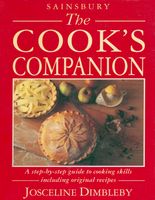Advertisement
Carving and Cutting
Appears in
Published 1991
One of my earliest memories is of my father sharpening the carving knife with a steel. Being a jazz enthusiast, and an old-fashioned English eccentric, the sharpening process was always done to a jazz rhythm and, in fact, the sliding and clicking noises of steel against steel fitted it perfectly and produced a marvellously sharp knife as well.
An important step towards successful carving is to rest the bird in a warm place for 10–15 minutes after taking it out of the oven – this ‘sets’ the flesh and makes it easier to slice neatly. Remember to include this resting time when you calculate what time to start cooking the bird for a particular meal. Also, always remember the supreme importance of the knife’s sharpness for successful carving; a blunt carving knife can induce fury and result in a wrecked bird. Slices should be as thin as you can manage and arranged on the plate rather than just thrown haphazardly on to it. Leg and wing joints should be cut off as neatly as possible.

